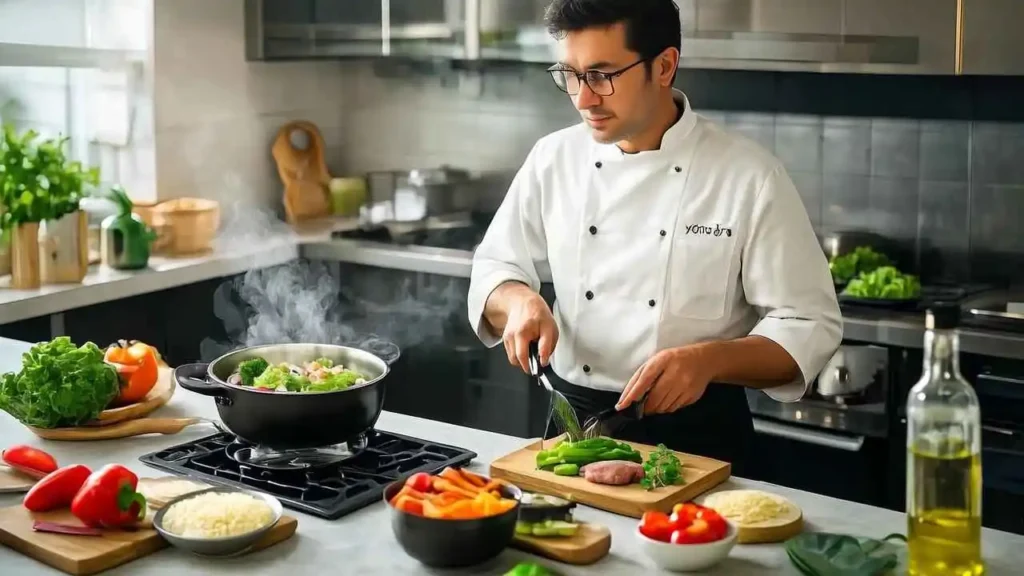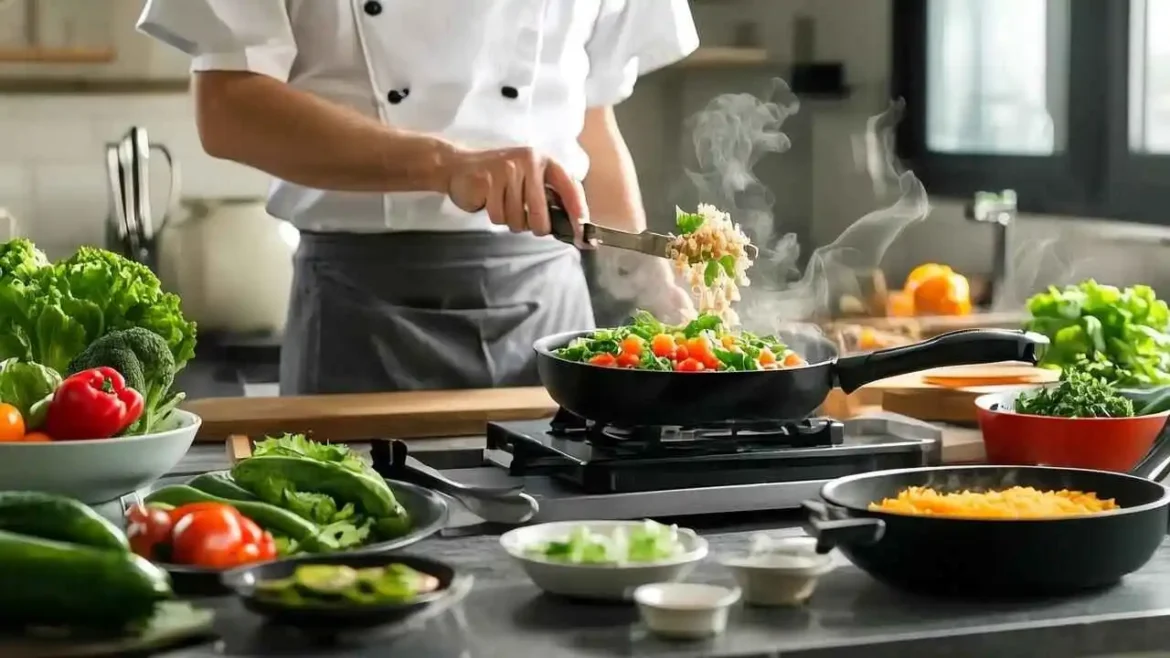
Cooking for Wellness: Best Methods for Healthy and Tasty Meals
In our quest for optimal well-being, we often focus on what we eat – the superfoods, the macronutrient ratios, the organic labels. Yet, a crucial, often overlooked aspect of nutrition is how we prepare our food. The cooking method we choose can profoundly impact the nutritional value, digestibility, and even the safety of our meals. As we delve into the culinary landscape, our aim is to uncover the cooking methods that best preserve vital nutrients, minimize harmful compounds, and ultimately contribute to our ultimate health benefits.
The kitchen, for us, is not just a place for sustenance, but a laboratory where raw ingredients are transformed into nourishing meals. However, this transformation is a delicate balance. Heat, water, and exposure to air can degrade sensitive vitamins (like vitamin C and B vitamins), minerals, and beneficial phytonutrients. Conversely, certain cooking processes, particularly those involving high temperatures, can create undesirable compounds such as Advanced Glycation End products (AGEs), Heterocyclic Amines (HCAs), and Polycyclic Aromatic Hydrocarbons (PAHs). Our challenge, then, is to navigate these processes intelligently, ensuring that our food retains its inherent goodness while becoming more palatable and digestible.
Let us explore the methods that champion health, offering practical insights for our everyday culinary adventures.
The Gentle Touch: Preserving Nutrients with Care
Some cooking methods stand out for their ability to treat ingredients with the utmost respect, preserving their delicate nutritional profiles.
Steaming
Steaming involves cooking food over boiling water, without direct immersion. This method is, arguably, one of the healthiest we can employ.
- Benefits:
- Superior Nutrient Retention: Water-soluble vitamins (B vitamins, vitamin C) and minerals, which often leach into cooking water during boiling, are largely retained.
- No Added Fat: Food cooks in its own moisture, eliminating the need for added oils or fats.
- Preserves Color and Texture: Steamed vegetables retain their vibrant hues and crisp-tender texture, making them more appealing.
- Good for Delicate Foods: Ideal for fish, chicken breast, and most vegetables.
- Our Tips:
- Avoid overcooking; aim for ‘al dente’ vegetables.
- Ensure the water level is sufficient but not touching the food in the steamer basket.
Poaching
Poaching is a gentle cooking technique where food is submerged in a liquid (water, broth, wine, or milk) that is kept just below boiling point.
- Benefits:
- Retains Moisture: Foods remain incredibly moist and tender due to the low, gentle heat.
- No Added Fat: Similar to steaming, poaching requires no additional fat.
- Delicate Flavor: Ideal for showcasing the natural flavors of ingredients.
- Best For: Eggs, delicate fish fillets, chicken breasts, and some fruits.
- Our Approach: Keep the liquid at a bare simmer – barely a ripple – to ensure even, gentle cooking.
Pressure Cooking
Pressure cooking cooks food significantly faster than conventional methods by creating a high-pressure environment that raises the boiling point of water.
- Benefits:
- Speed: Reduces cooking time dramatically, saving energy.
- Excellent Nutrient Retention: The sealed environment minimizes the escape of volatile nutrients and significantly reduces the time food is exposed to heat and oxygen, leading to better retention of vitamins and minerals compared to conventional boiling.
- Tenderizes Tough Foods: Effectively breaks down tough cuts of meat and makes legumes and grains quicker to prepare and more digestible.
- Our Considerations: While great for many items, we exercise caution with delicate vegetables that can become mushy.
The Balanced Approach: Flavor and Nutrition Hand-in-Hand
Some methods offer a good balance between flavor development and nutrient preservation, provided we employ them wisely.
Roasting and Baking
These dry-heat methods involve cooking food in an oven, often with a small amount of fat.
- Benefits:
- Flavor Development: High temperatures create delicious browning and caramelization (Maillard reaction), enhancing flavor and aroma.
- Versatility: Suitable for a wide range of foods, from vegetables and root crops to lean meats and fish.
- Minimal Added Fat: Can be done with very little fat, or even none if food is wrapped or moisture-rich.
- Our Considerations: While delicious, prolonged exposure to high temperatures can degrade some heat-sensitive nutrients and potentially form AGEs.
- Our Tips for Healthier Roasting/Baking:
- Use moderate temperatures (below 400°F/200°C) when possible.
- Line trays with parchment paper to prevent sticking and reduce the need for excessive oil.
- Use healthy, heat-stable oils like olive oil or avocado oil sparingly.
- Don’t overcook; aim for tender-crisp vegetables.
Stir-Frying
A rapid cooking method developed in Asian cuisines, stir-frying involves quickly cooking small pieces of food in a hot pan or wok with a minimal amount of oil, constantly stirring.
- Benefits:
- Short Cooking Time: Minimizes nutrient loss from prolonged heat exposure.
- Retains Texture: Vegetables remain crisp-tender and vibrant.
- Minimal Oil Usage: Can be done with very little fat, especially if using a non-stick pan.
- Our Strategy for Success:
- Preparation is Key: Chop all ingredients uniformly and have them ready before starting.
- High Heat, Quick Cooking: Use a high smoke point oil (like avocado or peanut oil) and cook quickly in small batches to avoid overcrowding the pan, which can steam rather than fry.
- Add Flavor Naturally: Incorporate plenty of aromatic vegetables, herbs, and spices rather than relying on heavy sauces.
The Methods Requiring More Prudence
While convenient and flavorful, certain cooking methods demand more attention to detail to minimize the potential for creating harmful compounds.
Grilling and Broiling
These methods involve cooking food over or under direct, intense heat.
- Benefits:
- Distinct Flavor: Creates a unique smoky, charred flavor that many find appealing.
- Fat Reduction: Fat can drip away, leading to a leaner final product.
- Our Health Concerns:
- Formation of Harmful Compounds: High-temperature direct heat, especially when charring occurs, can lead to the formation of HCAs (in meats) and PAHs (from fat dripping onto coals).
- Our Mitigation Strategies:
- Marinate: Marinating meats (especially with acidic ingredients, herbs, and spices) can significantly reduce HCA formation.
- Avoid Charring: Do not overcook or char food. Scrape off any black, burnt bits.
- Smaller Portions: Cook smaller, thinner pieces of meat for shorter periods.
- Pre-cook: Partially cook meat in an oven or microwave before grilling to reduce time on the direct heat source.
- Clean Grill Grates: Reduce build-up of carcinogens from previous cooking.
Boiling/Blanching (with caution)
Boiling involves cooking food by fully immersing it in vigorously boiling water. While simple, it’s generally considered less ideal for preserving nutrients due to leaching.
- Drawbacks: Significant loss of water-soluble vitamins and some minerals into the cooking water.
- When We Use It Wisely:
- Blanching: Quick boiling followed by immediate chilling (ice bath) is excellent for preserving the color and texture of vegetables before freezing or for removing bitterness.
- Potatoes (with skin): Boiling potatoes with their skin on helps retain more nutrients.
- Soup Bases: If the cooking water is going to be consumed as part of a soup or broth, nutrient loss is less of a concern.
A Comparative Look at Cooking Methods





